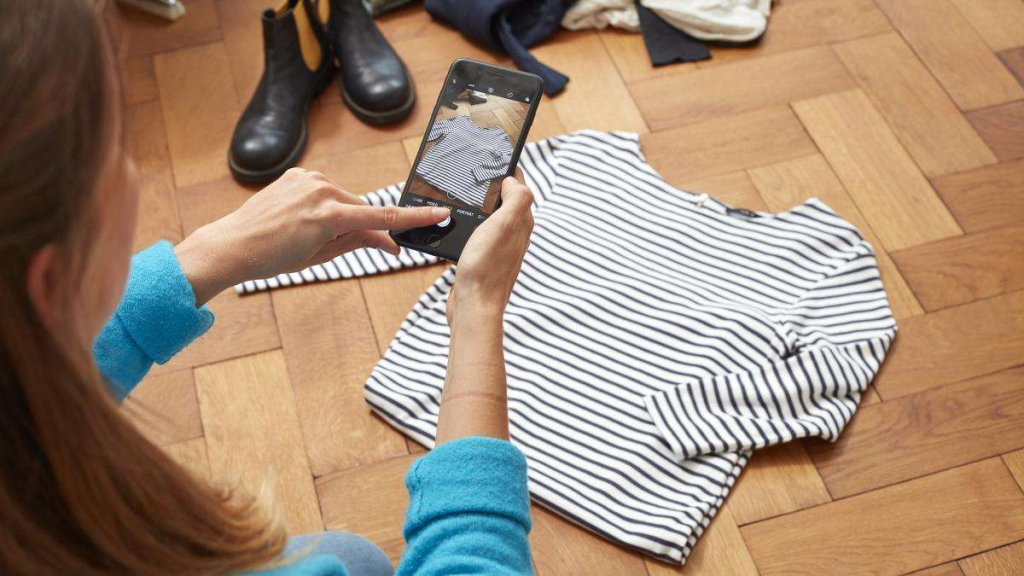If you ever shopped second-hand, you know what a hassle it can be. You usually make a whole day out of it, spend hours in a shop just to come out empty handed. The clothes you liked weren’t in your size or you simply didn’t find what you were looking for. Thanks to new technologies and digitalization, second-hand is becoming more convenient and widespread.
With the fashion industry responsible for 10% of global carbon emissions and generating 21 billion tons of waste a year, consumers are looking at buying more sustainably (UNECE, 2021). Buying second-hand is a great way of contributing to change. In fact, second-hand clothing has become a huge trend on social media helping the market grow 11 times faster than the broader retail clothing sector (Gilliland & Gilliland, 2021). However, how can we face the issue of feeling lost when entering a second-hand store and tackle what Chief executive of Vestiaire Collective Maximilian Bittner pointed out “You need to be able to find what you want in your size and in physical retail that is always going to be a challenge”? That’s where technology comes in.
Recently we have seen the rise of many reselling platforms such as Vinted in Europe or ThredUp and Poshmark in the US. These app-based platform use a peer-to-peer model where sellers upload pictures of the clothes they don’t wear anymore along with a descriptions and ship directly to the buyers. The goal of the apps is mainly to create a community around second-hand, but mostly to make second-hand more accessible and easier. You can easily search for what you’re looking for, for example, let’s say you are looking for a red sweater, you can type it in the search bar, and it will give you the list of red sweaters available to you. This is one of the many positive impacts of technology on the fashion industry and how it can help us tackle environmental and social issues.
References:
Dumais, E. (2022, June 22). Welcome to the Future of Thrifting: How New E-Comm Technology Is Changing the Way We Shop Secondhand. Retrieved September 20, 2022, from https://www.vice.com/en/article/akvx8e/thrift-shopping-technology-2022
Eley, J. (2021, June 11). Second-hand fashion gets the big tech makeover. Financial Times. Retrieved September 20, 2022, from https://www.ft.com/content/469ca69b-c2ac-4974-a9d2-315c3e87da32
Gilliland, N., & Gilliland, N. (2021, September 8). How digital is driving the acceleration of fashion resale. Econsultancy. Retrieved September 20, 2022, from https://econsultancy.com/how-digital-driving-acceleration-fashion-resale-recommerce/
Online market and community for fashion items and more: Vinted. (n.d.). Retrieved September 20, 2022, from https://ellenmacarthurfoundation.org/circular-examples/vinted
UNECE. (March 1, 2018) Fashion and the SDGs: What role for the UN? UNECE, Retrieved September 20, 2022, from https://unece.org/fileadmin/DAM/RCM_Website/RFSD_2018_Side_event_sustainable_fashion.pdf


I am glad that I found this post, because I haven’t known these platforms, which simplify the buying process of second-hand clothing. It does make sense to gain more traction to transform towards to a circular economy. So I am very happy to download the app and use it cautiosly resulting in a more sustainable purchase. However, I might fear that pictures are made in a way defects could be hidden, so I cannot actually see how good the quality still is and if I really want to buy it. From a sustainable perspective, it does not make sense to send it back so I really do want to have complete transparency. At this point, I might need to trust in the quality securing mechanisms of the introduced marketplaces.
Interesting topic, Coline! I’d love to shop and buy new clothes every season, but recently I’ve discovered how much more sustainable and cheaper it is to buy second-hand clothes. You can say I’m quite new to this part of shopping, so I am not that familiar yet. Though, I am planning to join the platform Vinted soon! Nevertheless, I do have heard some horror experiences from other people on Vinted. An example is that a girl tried to sell her quite luxurious winter jacket to someone in France, but when received that person reported the item to be fake and even refused to pay. Sounds terrible. Are you active on the platform? If yes, have you heard or experienced such things? What can platforms do to encounter these issues?
Hi Mila,
Thank you for your comment. The example you gave does sound horrible. Personally I haven’t been very active yet on the platforms but I do know some people who have been and haven’t had any problems. Of course you always have a risk with scammers, that’s way in the case a digital passport for the garment could be a great idea. I don’t know if you have heard of this technology yet, but it’s a QR code for garments that gives you the details of the garment such as where it was produced, when it was first purchased and where, etc. It could help ensure that people are selling the product they’re showing on the picture and also prevent people from saying that the garment is fake. Or platforms could also require a certificate for the garment. Of course if you don’t keep your documentation could be hard. Just some ideas here, if you have any too please feel free to share them.